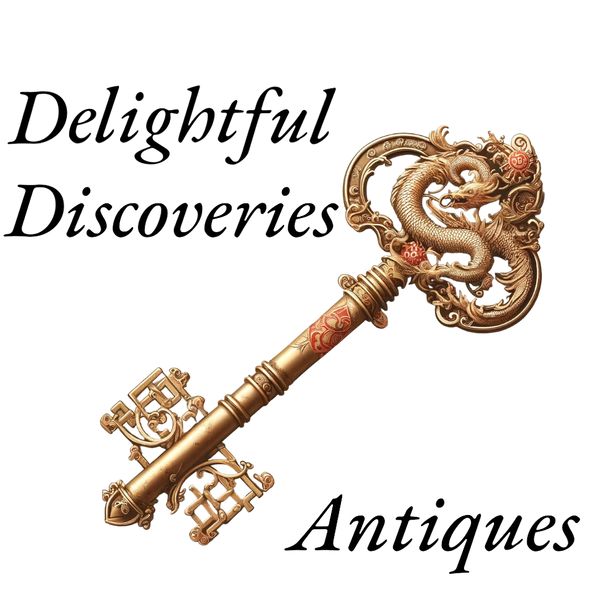
For the Love of Snuff Bottles
Share
I have a deep passion for snuff bottles. I actually have quite a few that I have collected along my journey of learning about them. Of those, there are only a few that I truly treasure, as I've found that I cannot afford the snuff bottles that appeal to me the most.
If you don't know what snuff bottles are, this is the perfect article for you. These miniature works of art have been a beloved collectible for centuries, and their intricate designs and beautiful details have captured the hearts of many. From their origins in the Qing Dynasty to the modern-day collectors' market, Chinese snuff bottles have a rich and fascinating history. Whether you're a seasoned collector or just starting to explore the world of antiques, there's something magical about these tiny treasures that's sure to captivate you. In this article, we'll take a deep dive into the world of Chinese snuff bottles, exploring their history, styles, and symbolism. We'll also share tips on how to identify and value these unique pieces, and offer insights into why they continue to be a popular and sought-after collectible today. So buckle up and get ready to uncover the beauty of Chinese snuff bottles!
What are Chinese snuff bottles?
Chinese snuff bottles are small, ornate containers that were used to hold powdered tobacco, also known as snuff. Snuff-taking was a popular pastime for the Chinese elite, and snuff bottles were an essential accessory for anyone who wished to partake in this cultural tradition. The bottles were typically made of materials such as glass, porcelain, jade, and various types of stone, and were often adorned with intricate designs and symbols.
The size of the bottles varied depending on the amount of snuff they were designed to hold. Some bottles were designed to hold a single dose of snuff, while others were larger and could hold enough snuff for multiple uses. The bottles were typically carried on the person, either in a small pouch or attached to a belt.
The use of snuff bottles declined in China during the early 20th century, as smoking became a more popular pastime. However, the bottles continued to be produced as works of art, and their popularity as collectibles began to grow.
The history of Chinese snuff bottles
The use of snuff in China can be traced back to the 16th century, during the Ming Dynasty. Snuff-taking was introduced to China by the Portuguese, who had learned about the practice from their trading partners in Asia. The Chinese soon adopted the practice, and snuff-taking became a popular pastime among the upper classes.
The first snuff bottles were made of materials such as wood and bamboo, and were often plain and unadorned. However, as the popularity of snuff-taking grew, so too did the demand for more ornate and decorative snuff bottles. By the Qing Dynasty (1644-1912), snuff bottles had become an art form in their own right, and were created by skilled craftsmen using a variety of materials and techniques.
During the Qing Dynasty, the production of snuff bottles reached its peak, with many different styles and designs being created. The bottles were often used as gifts or presented as tokens of respect, and were highly prized by their owners.
Styles and symbolism of Chinese snuff bottles
Chinese snuff bottles are known for their intricate designs and beautiful details, which often incorporate symbols and motifs that are significant in Chinese culture. Some of the most common themes and motifs found on snuff bottles include dragons, phoenixes, flowers, animals, and landscapes.
The symbolism of these designs varies, but many are believed to bring good luck or offer protection. For example, the dragon is a symbol of power and strength, while the phoenix represents rebirth and renewal. Flowers such as peonies and lotuses are associated with good fortune and prosperity, while animals such as the tiger and the crane are believed to bring longevity and good health.
In addition to these traditional motifs, many snuff bottles also incorporate calligraphy or other forms of Chinese art. The bottles are often designed to be viewed from all angles, and may feature intricate carvings or engravings that add to their beauty and complexity.
Materials used in creating Chinese snuff bottles
Chinese snuff bottles can be made from a wide variety of materials, each of which has its own unique characteristics and properties. Some of the most common materials used in creating snuff bottles include:
- Porcelain: Porcelain snuff bottles are known for their delicate beauty and intricate designs. They are often decorated with colorful glazes or painted with intricate scenes or patterns.
- Glass: Glass snuff bottles are prized for their clarity and transparency, which allows the snuff inside to be seen. They can be plain or decorated with etched or painted designs.
- Jade: Jade snuff bottles are highly prized for their beauty and durability. They are often carved with intricate designs or fashioned into unique shapes.
- Agate: Agate snuff bottles are known for their rich, earthy colors and distinctive patterns. They are often carved into intricate shapes or decorated with gold or silver.
- Amber: Amber snuff bottles are prized for their warm, golden color and unique patterns. They are often carved into intricate shapes or decorated with precious stones.
Conclusion - The enduring appeal of Chinese snuff bottles
In conclusion, Chinese snuff bottles are miniature works of art that have captured the hearts of collectors for centuries. From their origins to the modern-day collectors' market, snuff bottles have a rich and fascinating history that continues to captivate collectors today.
Whether you're drawn to the intricate designs, cultural significance, or simply the beauty of these tiny treasures, there's no denying the enduring appeal of Chinese snuff bottles. So if you're looking for a new and exciting collectible to add to your collection, consider exploring the world of Chinese snuff bottles – you never know what treasures you might uncover!
